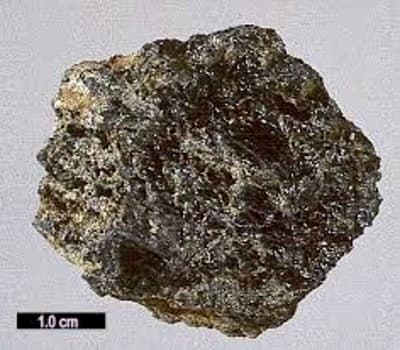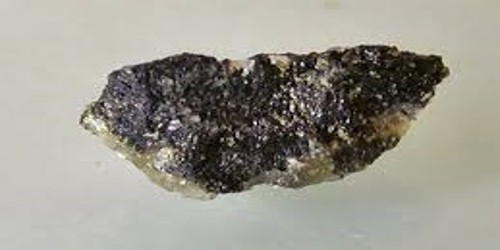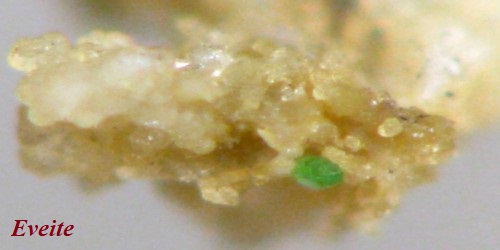Magnesiohastingsite is a calcium-containing amphibole and a member of the hornblende group. It is an uncommon mineral that is found in alkaline basalts, in andesites, latites, tephrites, and tuffs, and in carbonatites. It is a monoclinic-prismatic green mineral containing aluminum, calcium, hydrogen, iron, magnesium, oxygen, silicon, and sodium. It is an inosilicate (chain silicate) with the formula NaCa2(Mg4Fe3+)(Si6Al2)O22(OH)2 and molar mass 864.69 g.
It was named in 1928 by Marland P. Billings. It was named for the magnesium content in the composition and for its relationship to hastingsite. Hastingsite was named for the locality in Dungannon Township, Hastings County, Ontario, Canada.
General Information
- Category: Amphibole
- Formula: (repeating unit) NaCa2(Mg4Fe3+)(Si6Al2)O22(OH)2
- Crystal system: Monoclinic
- Crystal class: Prismatic (2/m) (same H-M symbol)
- Formula mass 69 g/mol
- Color: Green to dark green or black

Properties
The mineral displays simple or multiple twinning parallel to a prism face. It is a brittle mineral, with Mohs hardness 5 to 6 and specific gravity 3.2, with increasing magnesium content causing a decrease in specific gravity. In synthetic magnesiohastingsite, it appears that iron occurs both as ferrous iron Fe2+ and as ferric iron Fe3+, but the ideal formula features only ferric iron. It is not radioactive and it is insoluble in hydrochloric acid.
- Twinning: Simple or multiple twinning parallels to {100}
- Cleavage: Good on {110} with intersections at about 56° and 124°.
- Tenacity: Brittle
- Mohs scale hardness: 5 to 6
- Luster: Vitreous
- Streak: Pale grey-green to pale brownish-green
- Diaphaneity: Subopaque
- Specific gravity: 3.16 to 3.22
- Optical properties: Biaxial (-)
- Solubility: Insoluble in HCl
Occurrence and associations
The type locality is in the Canadian National Railway tunnel, Montreal, Quebec, Canada. It is common in amphibolite, schist and pegmatitic gabbro. It is also found in welded tuffs, granodiorite, granite and tonalite. Localities include:
- The granitic batholiths of the Scottish Highlands
- The Swiss and Italian Alps
- The Harz Mountains, Germany
- Finland and Sweden
- Japan, where it is widespread
- The Southern California and the Sierra Nevada batholiths, California, US
- Langbein, Sweden, in skarn
Association: Olivine, plagioclase, pyroxenes. Associated minerals include quartz, orthoclase, plagioclase, biotite, magnetite, and apatite. Barkevikite and the magnesium-rich members of the hastingsite group are found in diorite, essexite and related calcium-rich rocks.
Information Source:
















